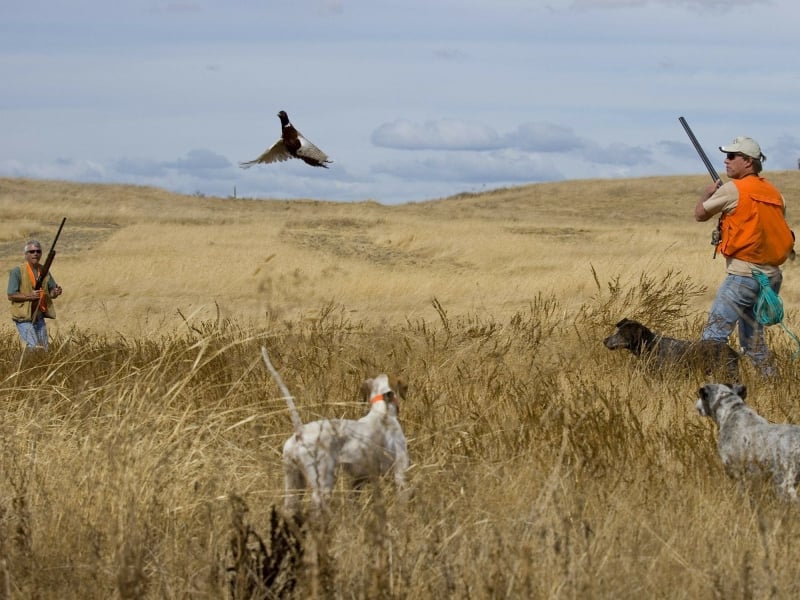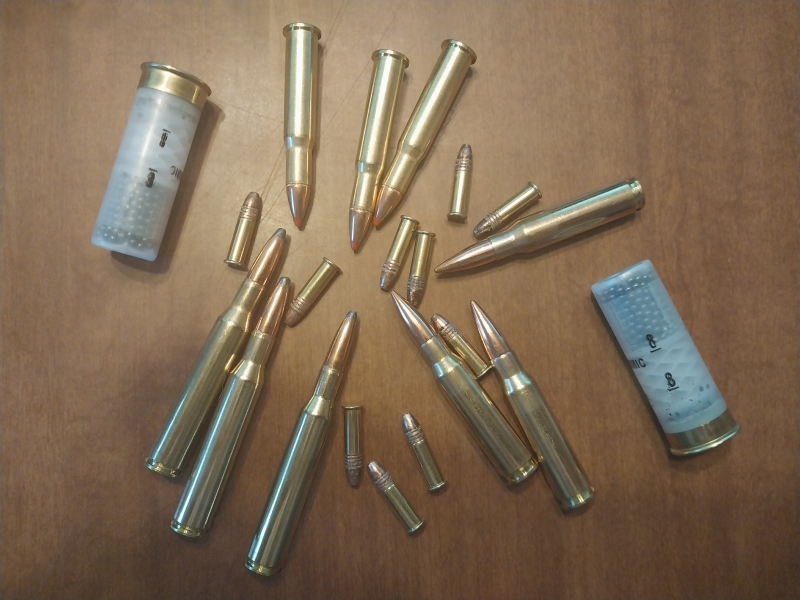The US Fish and Wildlife Service (USFWS) has announced a Final Rule banning traditional lead hunting ammunition on eight National Wildlife Refuges that have recently been opened for hunting. The USFWS additionally banned lead fishing tackle on seven wildlife refuges, despite evidence showing that lead bullets and tackle pose no elevated risk to humans or animals.

The Proposed Rule, which has now been finalized, was announced in June of 2023. The proposal opened 48 new hunting opportunities across 3,000 acres of the refuges, while simultaneously banning lead ammunition and fishing tackle on those same lands. The National Shooting Sports Foundation (NSSF) strenuously objected, producing scientific evidence disputing the USFWS’s statements, which offered no supporting data at all.
Activist Driven
The rule is driven by the anti-hunting Center for Biological Diversity, which sued the USFWS over lead ammunition, seeking to ban it from all federal lands. The USFWS settled the suit, and NSSF believes the settlement includes promulgating this new rule and others like it moving forward.
Much of the opposition to lead ammunition stems from concerns that raptors, such as bald eagles, who consume the entrails of unrecovered game will be poisoned by lead fragments. Yet the population of bald eagles increased 724% from 1981 to 2006. That trend continues today, and not only among bald eagles.
Environmental groups seeking to ban lead ammunition also cite a 2008 North Dakota decision to destroy food pantry venison packages due to a flawed experiment in which such packages were examined for lead fragments. The experiment was conducted by a board member of the Peregrine Fund, whose stated goal is to ban lead ammunition. He handpicked certain packages which were examined by a lab in Iowa.

North Dakota ordered the venison’s destruction based on the lab’s report, but the lab’s director criticized the action. “I think North Dakota is drawing the wrong conclusions. We did what they asked, but they did not take an arbitrary sample,” he said. In other words, North Dakota was manipulated by an activist who staged an experiment, and then misrepresented the results.
The Real Science
According to NSSF, there is no unbiased scientific evidence that traditional lead core ammunition adversely affects wildlife populations to an extent requiring bans or restrictions beyond those that currently exist. NSSF points out that “wildlife management policy is based on managing population impacts, not on preventing isolated instances of harm to specific individual animals in a species.” The data regarding bald eagle populations seem to reinforce this point.
The Environmental Protection Agency, rarely a friend to hunters, does not classify lead ammunition from shooting ranges, much less open country hunting, to be a threat to humans or wildlife. Furthermore, US Geological Survey data indicate that traditional ammunition accounts for only about 5% of all the lead used in the United States for any purpose, and the vast majority of that lead is fired on ranges, not on hunting lands. Those data demonstrate, once again, that lead bullets are not harmful to humans or animals.
Returning to the North Dakota-Iowa venison incident, the Iowa Department of Public Health (IDPH) conducted a 15-year study of Iowans’ blood lead levels. “IDPH maintains that if lead in venison were a serious health risk,” the agency concluded, “it would likely have surfaced within extensive blood lead testing since 1992 with 500,000 youths under 6 and 25,000 adults having been screened.” NSSF points out that “Iowa has never had a case of a hunter having elevated lead levels caused by consuming harvested game.” Note that the study concluded the year before this incident.

The year that North Dakota destroyed the packaged venison (2008), the US Centers for Disease Control & Prevention (CDC) conducted a study on blood lead levels of North Dakota hunters. The CDC’s results confirmed that “consuming game harvested with traditional ammunition does not pose a human health risk.”
NSSF recognizes that lead seems to be an issue for California Condors and admits that certain actions are warranted there. According to Audubon, lead is the leading killer of California Condors, though they can only cite the deaths of 30 birds between 2007 and 2017 due to lead poisoning. Audubon offers no scientific data. They do acknowledge that “lead poisoning in waterfowl is way down, but it’s still a major issue for eagles, vultures, and other raptors.” Again, no data, except for a bad link to a nonexistent USFWS page.
NSSF Protests
NSSF Senior Vice President Lawrence Keane stated “This administration claimed it would follow the science, yet at every turn they have outright ignored it to appease anti-hunting activists. These policies are detrimental to hunters and anglers as they unnecessarily create price barriers to participation… [the USFWS] are not acting in the best interest of the public or evidence-based wildlife conservation.”
Ammunition sales generate tax revenue that serves as the primary source of wildlife conservation funding in the United States. Of the $1.6 billion apportioned to the states for wildlife conservation in 2022, $1.19 billion came from the ammunition excise tax. Hunting and fishing license fees contribute millions more.
Banning lead ammunition will force hunters and shooters to adopt more expensive steel or alloy-cored ammunition, which costs roughly 25% more. The result would likely be a significant drop in ammo purchases, meaning a concurrent shortfall of tax revenue designated for wildlife conservation. In effect, a ban would not only hurt hunters, but it would also hurt the wildlife that is ostensibly being protected.

Congressional Relief?
NSSF repeated its call for Congress to pass Virginia Representative Robert Wittman’s Protecting Access for Hunters and Anglers Act (H.R. 615). If passed, the bill would prohibit the Interior Department (which oversees the USFWS) and Agriculture Department from banning lead ammunition and fishing tackle on federal lands.
There are caveats regarding existing regulations and situations in which wildlife populations are clearly in decline as a result of lead contamination. But both bills require the Secretaries of the Interior and Agriculture to provide site-specific peer-reviewed data, in cooperation with state agencies, to prove those conditions. Data or pressure from activists would not meet that standard. Montana Senator Steve Daines has introduced a companion Senate bill of the same name (S. 1185).
Funding Conservation
NSSF noted that the Pittman-Robertson Excise Taxes on ammunition “have contributed over $16 billion since 1937, or $25 billion when adjusted for inflation, for wildlife and habitat conservation.” The Pitman-Robertson taxes are the leading funding source for conservation. Raising ammunition prices by 25% or more would certainly price many hunters from the market were it to spread, as is the goal. Conservation money would decrease. If you hunt in a National Forest, this could be you if the trend continues.

That is not sensationalism. Banning lead ammo entirely is a priority for some environmental activists. On his last day in office, Obama Administration USFWS Director Dan Ashe quietly, and unilaterally, banned lead ammo on federal land. All federal land. Audubon and other activist groups celebrated that action. Fortunately, Ashe’s successor repealed the ban as his first official act. This will not go away, but Congressional action can make it much harder to implement.
The USFWS Final Rule demonstrates that they listen to environmental activists over real conservationists. Congress will hopefully act on this matter. Whether the president would sign those bills is unknown. Let’s start by getting them to his desk. Then we’ll see.


